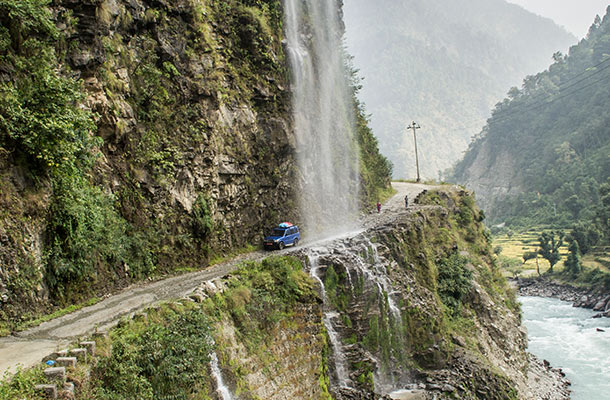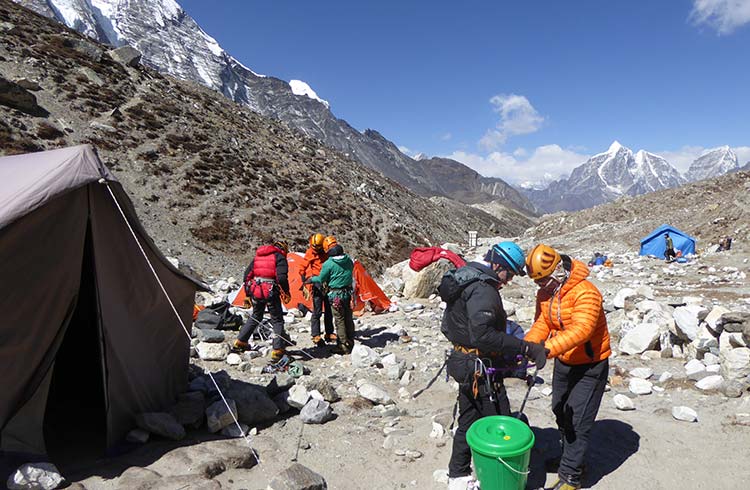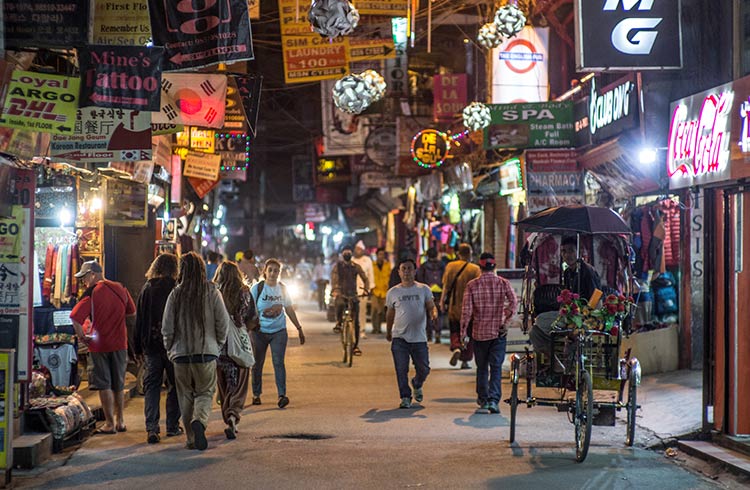Transport in Nepal: Tips for Traveling Around Safely
Road safety in Nepal is a major challenge and, in some cases, downright dangerous. Find out how to ride safely through the mountainous terrain with these transport tips.
 Photo © Bibek Neupane
Photo © Bibek Neupane
About 60% of the Nepali roads are hard-surface roads, and most of them connect the cities in the Kathmandu Valley.
The motorways in the other regions, on the other hand, are usually covered with gravel and are especially poorly-maintained in the highlands.
To drive here, you’d have to be a real master of the roads.
Taking into account the difficulty of the roads and frequent landslides, accidents do happen on these dangerous roads. But thankfully, not as often as you might think.
Most of the local Nepali drivers who operate buses along these roads are experts, so it’s usually is safe to explore Nepal on public transport.
Be prepared to be thrown out of bus seats as the vehicle ploughs through potholes, take note of upturned lorries on hairpin bends, and holy cows that loom out of nowhere. This is a place where travel is definitely not for the faint hearted but an experience in travelling.
- Driving in Nepal
- Safe public transport in Nepal
- Road safety in Nepal
- Road conditions in Kathmandu Valley
- Air safety in Nepal
Driving in Nepal
If you plan on driving in Nepal, avoid doing this during the monsoon season.
Monsoon rains cause landslides and make driving and using the roads risky and dangerous.
In some regions, the roads might be blocked or washed away, and they won’t be repaired until the dry season.
Be aware too that the local driving style in Nepal is adrenaline-pumping to anyone but the locals. Road rules exist, but nobody really obeys them.
Local drivers also use the horn as signal of right-of-way; Those who signalled first, drive first.
Although it may seem chaotic, this style of driving doesn’t cause conflict or frequent accidents on the roads. Generally, the people remain calm and compassionate – thanks to the Buddhist and Hindu philosophy.
Safe public transport in Nepal
Public transport is very common and reliable in Nepal. There are four main types of transport that are useful for travelers:
1. Local buses
These cheap and crowded buses connect major destinations and are used by both locals and tourists.
If you decide to take a local bus, don't be surprised if you find a goat on your lap. The roof of these buses are always packed with people and luggage, and your backpack will be put among boxes, sacks, and even domestic animals.
It takes many hours for these buses to reach the destination, as they stop wherever people ask them to stop and add more passengers and luggage on the way.
Long distance buses follow a predefined schedule, and usually start early in the morning in order to cover the distance before it gets dark. It’s best to get your tickets one or two days before your journey. These are sold at the bus stations.
To get a flavour for the speed of Nepali local buses, consider this fact: it takes up to 7 hours for a local bus to cover the distance from Kathmandu to Pokhara, which is just about 200km. However, these buses usually make a lunch stop.
2. Mini-vans or micro-buses
Mini-van or Micro-bus tickets are usually 50-60% more expensive. They travel a bit faster than the local buses, and are more comfortable. Kathmandu to Pokhara can be covered within 5-6 hours.
If you prefer comfort, go to any tourist agency in Kathmandu or Pokhara and purchase a tourist bus ticket for US $10–20. No goats, no crowd, a reserved seat, sometimes air-conditioning, and English-speaking passengers around.
These buses operate for all major tourist routes between Kathmandu, Pokhara, Chitwan National Park, and Lumbini.
3. Public jeeps
Public jeeps are also common means of transportation, and are used in the mountain regions of Nepal.
The length of the drive can be as long as 17 hours, like the trip from Kathmandu to Sallery, (a village near Lukla) where you can start your trek through Sagarmatha National Park.
You might not believe it, but these jeeps can be almost as crowded as the local buses. Try not to take one of the two seats in the first row – you might find yourself squished up with three or four other people.
4. Taxis in Nepal
Taxis, private vans, and private jeeps can take you anywhere in Nepal, and prices are always negotiable. For example, the cost of a trip from Kathmandu airport to Thamel might cost you 400 – 1,500 rupees.
If you’d like to hire a private jeep to get to the starting point of your trek, you can easily arrange this service form your hotel or at any tourist agency.
Prices:
- The cost of a private minivan from Pokhara to Nayapul in the Annapurna region can be from 4,000 – 10,000 rupees
- Hiring a jeep from Kathmandu to a starting point of Manaslu circuit trek might cost 16,000 – 20,000 rupees.
Keep calm, watch carefully, choose a safe mode of transport, and enjoy Nepal's scenic roads.
Road safety in Nepal
There are a few roads in Nepal that are badly maintained with massive potholes and many are constructed round the terrain which includes winding roads, hairpin bends and steep precipices with no safety barriers. Combine this with no street lighting in rural areas and in areas of Kathmandu and there is a cocktail with danger written all over it, particularly at night.
Driving during darkness is particularly dangerous in Nepal and any journey is best done in daylight hours. Hitch hiking is not advisable as the drivers of lorries and some cars are often unqualified, and lorries carry dangerous loads which are poorly loaded. Travel on any road in Nepal and the debris of overloaded trucks, buses that misjudged a bend and wonky vehicles serve as a warning.
Expect to be overtaken by cars and lorries on bends and if you are driving be vigilant. Nepal has frequent bus accidents with fatalities. Do not travel on the roof of a bus as it is not only forbidden but the low strung cables across the streets are likely to either throw you off the top or decapitate you.
There are lots mopeds carrying families or boxes of chickens and crash helmets are unheard of. If you plan to hire one do so from a reputable company and only drive during the day. Pedestrians account for 40% of road fatalities in Nepal. Pavements are either non existent or pedestrians do not have priority.
Road conditions in Kathmandu Valley
Roads in the Kathmandu Valley are congested, with little regard for any kind of traffic legislation. The traffic is very poorly controlled, and cows, which are considered holy, have the run of the road. If you are unfortunate enough to kill a cow while driving in Nepal, you are likely to have to pay compensation to the owner. Auto rickshaws have been removed from Kathmandu, as they contributed heavily to the air pollution. There are cycle rickshaws and buses around the city, and traffic jams are common, particularly between the hours of 9am to 5pm.
Air safety in Nepal
There are air crashes in Nepal largely due to the mountainous terrain. Many trekkers fly to Lukla which is one of the most hazardous airfields in the world surrounded by mountains. It also an incredible sight seeing the volume of aircraft handled here.
Related articles
Simple and flexible travel insurance
You can buy at home or while traveling, and claim online from anywhere in the world. With 150+ adventure activities covered and 24/7 emergency assistance.
Get a quote

No Comments